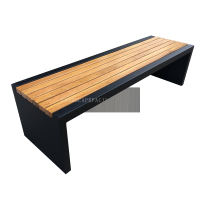Welcome to the website for landscape facilities products and knowledge.
What are the options for soundproofing or acoustic enhancements in the table’s design?
In today's evolving workspace environments, effective sound management has become crucial for productivity and comfort. Table design plays a significant role in acoustic performance, offering multiple solutions for soundproofing and acoustic enhancements. Manufacturers and designers now incorporate various innovative approaches to address noise concerns while maintaining aesthetic appeal and functionality.
One primary method involves integrating sound-absorbing materials directly into the table's construction. High-density acoustic foams and specialized sound-dampening cores can be embedded within the table structure, particularly in conference tables and shared work surfaces. These materials work by converting sound energy into minimal heat energy, effectively reducing sound transmission and echo. The thickness and density of these materials can be customized based on specific acoustic requirements and the table's intended use.
Another effective approach incorporates perforated surfaces and acoustic panels. Tables designed with strategically placed perforations on surfaces and edges allow sound waves to penetrate and get absorbed by underlying acoustic materials. This technique maintains visual elegance while providing substantial noise reduction. Some advanced designs feature removable acoustic panels that can be replaced or upgraded as acoustic needs change, offering long-term flexibility.
The integration of barrier materials represents another sophisticated solution. Mass-loaded vinyl (MLV) and composite damping sheets can be layered within table constructions to create effective sound barriers. These materials are particularly valuable in preventing sound transmission through table surfaces, making them ideal for environments where multiple conversations occur simultaneously, such as open-plan offices or collaborative spaces.
Edge sealing and strategic gap management contribute significantly to acoustic performance. Specially designed acoustic seals and gaskets can be incorporated where table components meet, preventing sound leakage through gaps and joints. This attention to detail ensures comprehensive sound control, addressing often-overlooked pathways for noise transmission.
Innovative hybrid solutions combine multiple approaches for maximum effect. Some contemporary tables feature integrated sound masking technology, which emits a gentle, ambient sound that makes speech less intelligible and distracting. Others incorporate active noise cancellation systems, particularly in high-tech conference and meeting tables. These systems use microphones and speakers to generate inverse sound waves that cancel out unwanted noise.
Material selection extends beyond hidden components to visible surfaces. Acoustic textiles and sound-absorbing wood composites can be used for table tops and surrounding elements. These materials not only contribute to noise reduction but also enhance the overall aesthetic appeal, proving that acoustic performance and design excellence can coexist harmoniously.
The implementation of floating table designs and isolation mounts prevents sound transmission through structural connections. By decoupling the table from floors and adjacent structures, these designs minimize vibration transfer and impact noise, creating a quieter environment particularly in multi-level buildings or spaces with sensitive equipment.
Modern acoustic table solutions also consider user experience and adaptability. Many designs incorporate modular components that allow for customization based on specific room acoustics and user requirements. This flexibility ensures that tables can evolve with changing workspace needs while maintaining optimal acoustic performance.
As workspace demands continue to evolve, the integration of smart technology with acoustic table design represents the cutting edge of innovation. Tables equipped with sensors can now monitor ambient noise levels and automatically adjust their acoustic properties or suggest optimal configurations for different activities, creating truly intelligent workspaces that respond to user needs in real-time.
The future of acoustic table design points toward more sustainable solutions, with manufacturers increasingly using recycled and eco-friendly sound-absorbing materials. This commitment to environmental responsibility, combined with advanced acoustic performance, demonstrates how table design continues to adapt to both ecological concerns and the evolving needs of modern work environments.
Related search:

Recommendation
Modern Stainless Steel Begonia Wood Park Chair Outdoor Courtyard Leisure Sun Protection Bench Long Seat